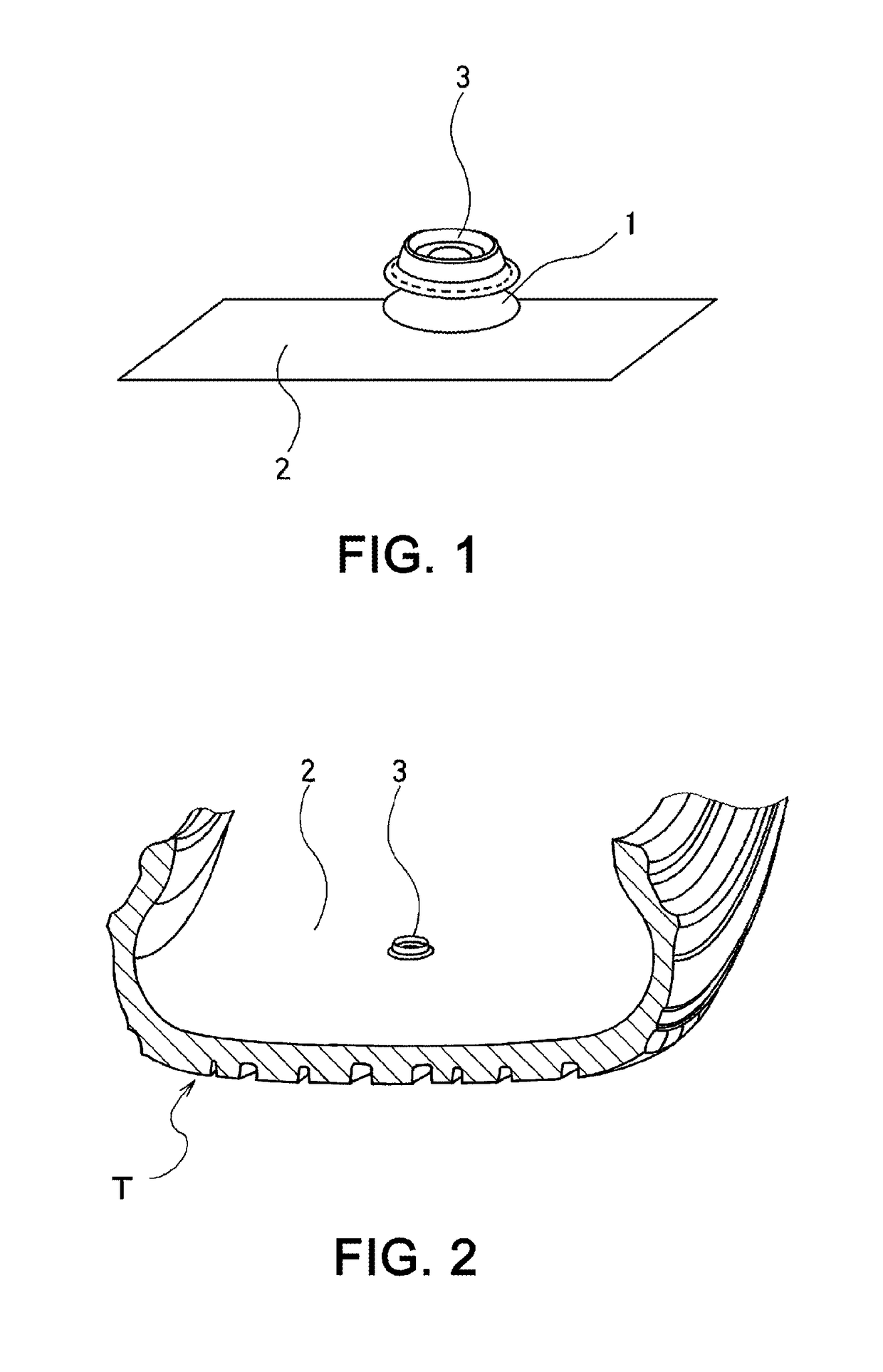Laminated body of rubber layers
a technology of rubber layers and rubber layers, applied in the field of laminated body of rubber layers, can solve the problems of falling off, failure of air pressure sensors, or the like accessories, and the difficulty of firmly adhesion of surface fasteners to the inner surfaces of tires made of rubber compositions, etc., to achieve the effect of enhancing the adhesion, improving the wettability of the resin layer and the rubber layer, and enhancing the bonding
- Summary
- Abstract
- Description
- Claims
- Application Information
AI Technical Summary
Benefits of technology
Problems solved by technology
Method used
Image
Examples
examples
[0074]Nine types of adhesive rubber compositions (Working examples 1 to 6 and Comparative examples 1 to 3) with formulations shown in Table 1 were prepared by kneading for 6 minutes in a 150 cc kneader, and then kneading using an 8 inch open roller. Unvulcanized rubber sheets (unvulcanized adhesive layers) were formed from the obtained adhesive rubber compositions.
[0075]As illustrated in FIG. 2, an unvulcanized tire T having a tire size of 215 / 60R16 was green molded, in a manner such that a snap fastener made from nylon resin (resin layer 3) was arranged on the tire inner surface 2 (unvulcanized rubber layer) by interposing the obtained unvulcanized adhesive layer therebetween. The tire inner surface was formed by an inner liner layer containing the rubber composition shown in Table 2. The rubber composition for an inner liner was made by measuring the formulation components other than sulfur and the vulcanization accelerator, kneading in a sealed Banbury mixer, discharging a master...
PUM
| Property | Measurement | Unit |
|---|---|---|
| temperature | aaaaa | aaaaa |
| temperature | aaaaa | aaaaa |
| temperature | aaaaa | aaaaa |
Abstract
Description
Claims
Application Information
 Login to View More
Login to View More - R&D
- Intellectual Property
- Life Sciences
- Materials
- Tech Scout
- Unparalleled Data Quality
- Higher Quality Content
- 60% Fewer Hallucinations
Browse by: Latest US Patents, China's latest patents, Technical Efficacy Thesaurus, Application Domain, Technology Topic, Popular Technical Reports.
© 2025 PatSnap. All rights reserved.Legal|Privacy policy|Modern Slavery Act Transparency Statement|Sitemap|About US| Contact US: help@patsnap.com



